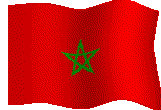 |
1 Mar: Meknes (I) - A Visit To Volubilis |
 |
1 Mar: Meknes (I) - A Visit To Volubilis |
Sojourn in Moroccan Tuscany
I woke up at 5:45am to take the 7 am train (DH 16) to Meknes. Once again, I met the Californian who told me about Hotel Ali. He's on his way back to Spain, and told me how much he enjoyed Rabat, a city that many backpackers avoid. I was determined to visit this city.
The train passed through the surprisingly green countryside of northern
Morocco. Vegetable and rice fields, olive groves and green meadows
- the sort of landscape that one associates more with Provence or Tuscany,
rather than Morocco. Like many others, I had expected the dry fine
sands of the Sahara, which is the most common image of Morocco to the world.
I should have known - how can a desert support 30 million people ?
Desert lands can support very few people. For example, the former
Spanish territory of Western Sahara, which is just as large as Morocco
proper, has only 100,000 to 200,000 people, given its largely desert environment.
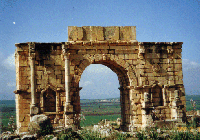 |
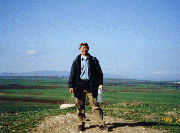 |
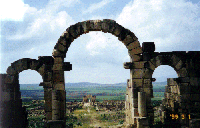 |
|
|
|
|
The Ville Nouvelle of Meknes, another of Morocco's great imperial capitals,
has the feel of a small French provincial town - light traffic and roadside
cafes dotted the city. But the city also appeared to be wealthier,
with the number of branded shoe and fashion shops along the streets.
People appeared to be friendlier, with none of the harassment, stares and
shouts ("Japan ! Japan !") I get elsewhere in Morocco. Here,
friendly locals greet strangers they encounter. I must have said
"Salaam" or "Wa alaykum a salam" countless times in Meknes.
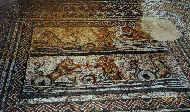 |
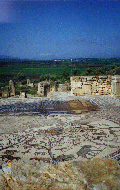 |
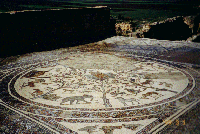 |
|
|
At a hotel lobby, I met two Aussies, one of whom was of partial Singapore descent - what a coincidence. After we checked into Hotel Majestic (DH 102), we decided to do the Roman city of Volubilis together. And so we took a cab (Meknes' cabs are metered - one of the few places in Morocco which do) to the grand taxi station, and caught a grand taxi (another six person carriage) to Moulay Idriss (DH 7).
Moulay Idriss is a holy town located on a small hill nestled against
the side of a mountain set in the middle of a beautiful green plain.
It's named after Morocco's most important saint, a descendant of Prophet
Mohammed, and founder of the first dynasty in Morocco. From afar,
the town and its buildings looked like, forgive me, the perfect curvature
of a giant half-bra which dropped from heavens.
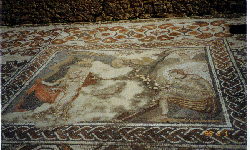 |
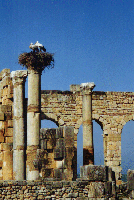 |
 |
|
|
|
|
We alighted at the central square, where workers, like those elsewhere in Morocco at that time, were busy setting up billboards and flags to celebrate the King's coronation day. Here, we took another grand taxi for Volubilis (DH 7). In a matter of minutes, we were at Volubilis. The whole process appeared to be complicated, but much easier and smoother than expected.
Volubilis was one of the westernmost outpost of the Roman Empire. Built around 40 AD, the site still has numerous columns, lots of mosaics, a grand triumphant arch, impressive ruins of houses and a grand basilica. Not surprising that the site has been declared a World Heritage site. The setting of Volubilis is attractive too - a huge treeless plain, with olive groves, wheat fields and much greenery. I could hardly believe I was in Morocco. Roman settlers must have found this place familiar and went on to settle in this new Umbria or Tuscany. We walked around for a while before returning to good old Meknes.
![]() 1 Mar: Meknes, the imperial city
1 Mar: Meknes, the imperial city